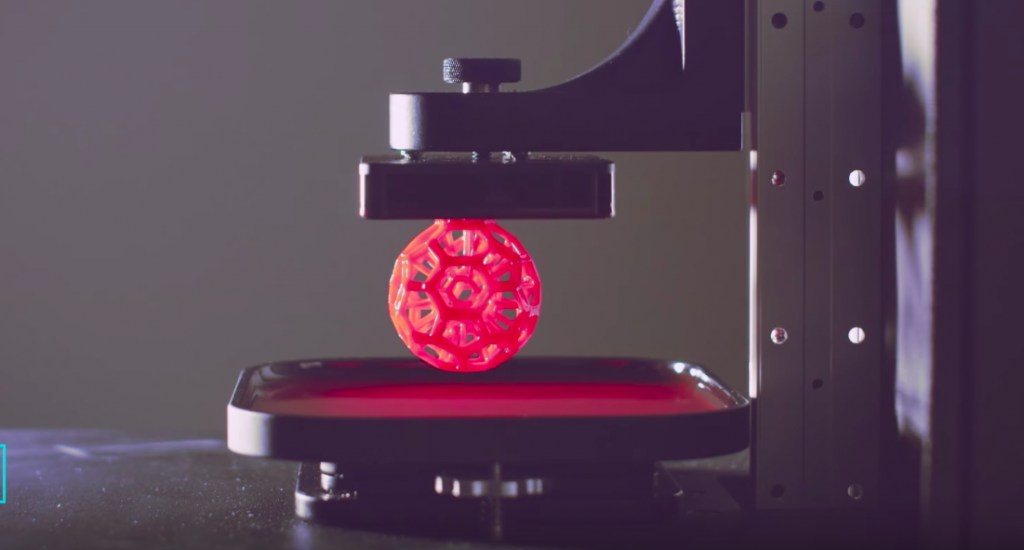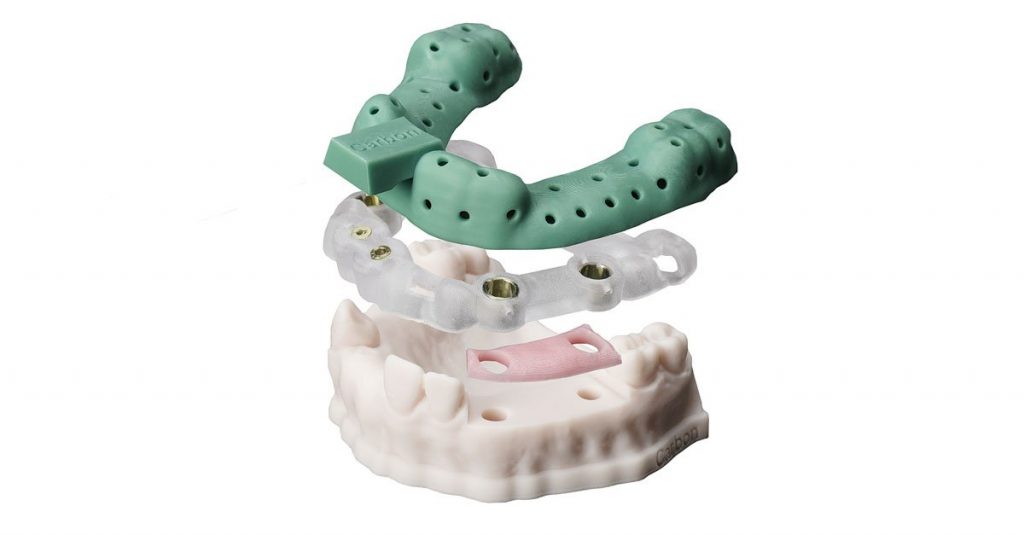Carbon’s new 3D printable DENTCA resins have been released with approval from the FDA.
DENTCA Denture Base II and DENTCA Denture Teeth resins are part of a regulated materials class and, according to Carbon, the first FDA-cleared complete solution for digital denture production. Typically, the FDA does not regulate materials, but an exception is made for those in dental use.
In this interview with Steven Pollack, Senior Staff Research Scientist at Carbon, 3D Printing Industry learns more about Carbon’s anticipated role in the medical and dental market, and plans for the future.
Digital traceability and rapid production
DENTCA Denture Base II and DENTCA Denture Teeth 3D printable resins are the product of Carbon’s partnership with CAD/CAM denture manufacturing specialist DENTCA. They allow technicians without any traditional denture making experience, to make prosthetics suitable for oral use.
In this same period, Carbon has also partnered with DREVE, another dental specialist, that is collaborating to make 3D printed gingiva gum masks and trays.
One of the advantages of 3D printing these devices, is that Carbon offers digital traceability of the process, with part serialization. Digital Light Processing (DLP) powered CLIP 3D printing, also reduces the amount of time taken to complete a product.

FDA certification
Dental materials cleared by the FDA fall into one of two classes: Class I which signifies minimum to no risk, and Class II that indicates some risk. Class III would be high risk, but very few dental devices make this grade, they also require pre-market approval before they can be sold.
DENTCA Denture Base II and DENTCA Denture Teeth have Class II approval from the FDA.
“Since the manufacturer of the final devices derived from these materials are dentists, dental laboratories, orthodontists and the like,” explains Pollack, “[the] FDA made the decision early in its history to regulate the materials “capable” of producing final dental devices.”
Materials in this class include alloys, ceramic and polymers, all those “that take final form in the hands of a practitioner or lab.”
The equivalence principle
For lower risk Class II, manufacturers can go through the 510(k) process. A process shared by some spinal implants. By testing the 3D printable material alongside another, already-martketed and safe medical device, low-risk materials can achieve FDA certification.
Pollack explains, “The majority of Class II devices require the manufacturer to provide pre-clinical (bench testing), and sometimes limited clinical data to prove the device is “substantially equivalent” to an existing product in commerce that is FDA-cleared,”
“There are also some “Unclassified” dental devices,” he adds, “That is, they were not put into a risk category in 1976, when the risk- based system was set up. These are generally treated as 510(k) devices because their risk has not been established.”

Who will come out on top?
The market for 3D printing in dental is getting increasingly crowded.
At the beginning of 2017, 3D Systems acquired NextDent as part of a deal with Vertex-Global Holding B.V. revealing the intention to use the company’s already approved materials in the Figure 4 configuration. This week VJ, 3D Systems CEO, announced the launch of the NextDent 5100 3D printer, the first products of this partnership. In an interview with 3D Printing Industry VJ underlined the significance of this vertical saying, “dentistry is the critical market for 3D Systems.”
Stratasys is also advancing in the dental market with the Objet260 Dental 3D Printer, EnvisionTEC have served the dental sector for a long time while DWS are one of the more recent market entrants.
Meanwhile, Carbon has every intention of staying in the race. Pollack concludes,
“While I can’t get into specifics, we’ve seen firsthand the many benefits that 3D manufacturing offers in this important industry, and we’re committed to continuing to develop new materials that enable us to improve lives.”
For more of the latest in digital dentistry and medicine subscribe to the most widely read newsletter in the industry, follow us on Twitter, and like us on Facebook.
Could Carbon’s dental resins be material of the year? Make your nominations for the 2018 3D Printing Awards now before they close next week.
Protolabs is sponsoring the 2018 3D Printing Industry Awards design competition. Want to design this year’s trophy? Submit your design now to win a 3D printer.
Featured image shows a 3D printed dental impression. Photo via Carbon



